Coaching With a Positive Psychology Approach to Wellness Motivation Using PERMA-V

We know nothing about motivation. All we can do is write books about it.
Peter F. Drucker
As a psychologist I’ve often been asked by professionals in the healthcare and health promotion fields “How do you motivate these people?” I’ve never liked that question. The use of the term ‘these people’ often meant the person inquiring was quite exasperated with the lack of progress seen by the people they were serving, and, it may have revealed a real bias against clients/patients who struggle with lifestyle improvement.
Motivation remains a very puzzling concept, nonetheless. Good definitions area tough to come by, but here’s one that’s not bad.
"The term motivation refers to factors that activate, direct, and sustain goal-directed behavior... Motives are the 'whys' of behavior—the needs or wants that drive behavior and explain what we do. We don't actually observe a motive; rather, we infer that one exists based on the behavior we observe."
Nevid JS. Psychology: Concepts and Applications. Belmont, CA: Wadsworth Cengage Learning; 2013
It usually doesn’t take health and wellness coaches long to realize, if they haven’t already in their lives, that we can’t motivate anyone. For motivation to work and to endure, it needs to eventually come from the inside-out. Fear motivation often gets people started, but for the lengthy process of behavioral change in lifestyle behavior, we usually need a little something else. This is where a positive approach wins out.
Life coaching, and now health and wellness coaching, has always been a strengths-based, positive psychology approach to helping people succeed at improving their lives. Today’s field of Positive Psychology has taken the work of the Humanistic Psychologists such as Abraham Maslow, Carl Rogers and others, and validated their concepts through research and theory. Studying what constitutes thriving and flourishing is taking us much further than just studying how to fix pathology.
Coaches are benefiting greatly from reading:
- Positivity: Groundbreaking Research Reveals How to Embrace the Hidden Strength of Positive Emotions, Overcome Negativity, and Thriveby Barbara Fredrickson
- Positive Psychology Coaching: Putting the Science of Happiness to Work for Your Clients by Robert Biswas-Diener
- Flourish: A Visionary New Understanding of Happiness and Well-beingby Martin Seligman and Jesse Boggs
PERMA + V And Coaching
One immediate way that coaches can apply Positive Psychology to their work with clients is through Martin Seligman’s model PERMA.
Real Balance Faculty Member Kathleen Jones (https://www.embodychangecoaching.com) recently presented an excellent Real Balance Webinar - "Pathways to Motivation: How Positive Psychology Can Spark Enthusiasm and Support Lasting Change"(https://us02web.zoom.us/rec/play/LV_Lsi0iNXo_WyIpRc0CkMFS_LpLjZ_2SnNi3WO1JoULeg07hPdLYPmyRLuKnazcnk3ebinjSFdSyxtW.b6vE-cOQdZ2ZJseN?canPlayFromShare=true&from=share_recording_detail&continueMode=true&componentName=rec-play&originRequestUrl=https%3A%2F%2Fus02web.zoom.us%2Frec%2Fshare%2FKARKBHRvMaBmFmMYHQgeEN5C_-sC0y5sWSO0J2aE-oT_wP3bqdvDPObAXVaUrEKA.gofsLMrIwMRe_01g)
Her webinar focused on “Infusing Goals and Action Steps with PERMA.” Let’s look at Seligman’s model and how we can use it in our coaching.
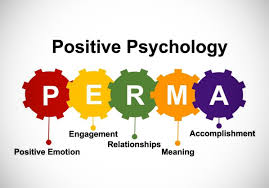
Later on, Seligman added a “V” for Vitality
Applying this model to motivation:
We’re motivated by positive emotions - wanting to experience joy or love or the thrill of excitement.
We seek engagement – the sense of being completely absorbed in an activity.
We’re driven to connect – to build relationships with others.
We pursue meaning – for example through faith or meaningful work or volunteering.
We’re driven toward achievement. Attaining goals or even checking off completed tasks is satisfying.
Vitality is integral to our wellbeing/wellness. Rest, good nutrition, exercise, etc., gives us the the energy and resilience we need to meet life’s challenges.
This link will take you to a very good and succinct description of the components of this model (https://www.itsmental.co.uk/PERMA-V-MODEL)
As coaches partner with their clients to co-create effective Wellness Plans, areas of the client’s life are identified where improvement is desired (Areas of Focus). To improve those areas, Goals are identified. Then Action Steps are identified and experimented with in the client’s life to work toward those Goals. (Wellness Mapping 360° Methodology https://realbalance.com )
So, how can this framework that PERMA-V provides help us coach with our clients in a way that maximizes motivation? How can each PERMA-V component help our clients be successful at carrying out the Action Steps they have committed to?
P – POSITIVE EMOTIONS
“Curing the negatives does not produce the positives.”
Martin Seligman
“Positivity opens us. The first core truth about positive emotions is that they open our hearts and our minds, making us more receptive and more creative.”
Barbara Fredrickson
From Kathleen’s Webinar:
Negative emotions narrow our thinking and make us less open to change. When we think about behavior change, we often think of the negative connotations – the deprivation, the self-denial, the hard work of sticking to a diet…
“I won’t be able to go out with my friends...”
“I have to give up everything I enjoy…”
“Exercise is torture…”
“I’d rather eat cardboard…”
COACHING IT UP
- Coach around mindset. How is your client framing the tasks ahead? What are their attitudes and beliefs around the changes they are attempting to make?
- Use the coaching technique of Reframing.
- Explore the client’s level of Self-Efficacy. If it’s low due to discouragement and demoralization, you’re going to hear a lot of negative thinking.
- “Sustain Talk” (M.I.- Motivational Interviewing) may be natural at this point. How can you listen for and build on “Change Talk”?
- Coach to emphasize Intrinsic Motivation. Inquire about what your client experienced when they carried out their Action Step. “Where did you go on your walk? What did you see?”
- Help clients select Action Steps that are in alignment with their interests and values. A client may think that “exercise” means joining a gym, when what would really bring them joy is more dancing and hiking. People do more of what they have fun doing!
- Sustain lifestyle change efforts by employing Virya – see below.
From Kathleen’s Webinar:
Virya, the attitude of joyful effort approaching goals with joy and enthusiasm. Virya is a Sanskrit word that can be defined as energy, effort, diligence, or persistence. But it’s not merely about perseverance, but the quality of joy that accompanies our steadfastness. In some texts virya is translated as “joyful perseverance,” a special type of effort imbued with wisdom and joy. Joyful effort keeps us enthusiastically engaged at every step along the way.
E – ENGAGEMENT
“It is not enough to be happy to have an excellent life.
The point is to be happy while doing things that
stretch our skills, that help us to grow and
fulfill our potential."
Mihaly Csikzentmihalyi
“Activities that meet our need for engagement flood the body with positive neurotransmitters and hormones that elevate one’s sense of well-being. This engagement helps us remain present, as well as synthesize the activities where we find calm, focus, and joy. Whether it’s playing an instrument, playing a sport, outdoor activity, dancing or even just a hobby. When time truly “flies by” during an activity, it is likely because the people involved were experiencing this sense of engagement.
We all need something in our lives that absorbs us into the current moment, creating a ‘flow’ of blissful immersion into the task or activity. This type of ‘flow’ of engagement stretches our intelligence, skills, and emotional capabilities.”(https://www.itsmental.co.uk/PERMA-V-MODEL)

Positive Psychologists love to speak about “Flow”, though not all Engagement results in Flow. We can be thoroughly absorbed in an activity yet only experience moments of Flow. When I’m fly-fishing and make a lovely cast that lands softly on the water right where I’d hoped it would, I may experience a Zen-like state of flow. Then on the next cast when I snag my back-cast on a willow branch I’m not in “the Flow” at all, but I’m still very engaged in this activity that I love.
COACHING IT UP
- Again, help clients select Action Steps that are in alignment with their interests and values.
- Find creative ways through the coaching conversation to integrate more of the client’s health goals into activities they already do. For example, a client who takes their children to athletic activities such as soccer or baseball can get in tremendous amounts of walking by circumnavigating the playing field instead of sitting in the stands during a game or practice.
- Help clients take on an experimental attitude towards trying new activities to see how they like them.
- Encourage clients to persist through the early phases of a new activity. It may take a while to build up to a physical activity to where it is no longer challenging or producing sore muscles. New dietary experiments may take a while to get to the new flavors that don’t rely on heavy amounts of salt, sugar, fat, etc.
- Again, coach for intrinsic motivation by inquiring about what your client experienced while performing the new behavior.
R – RELATIONSHIP
“Human connection is our superpower.
Good relationships help us get through life’s inevitable challenges and they keep us happier and healthier.
The good life is built with good relationships.”
Dr. Robert Waldinger
Coaching for connectedness is essential because support is critical to success at improving lifestyle and making it last. Support comes, of course, from you, the coach. But it also needs to be from the world around your client. Interpersonal support for behavioral change increases the probability the client will adopt that new behavior successfully. Lack of support from those around the client, or, worse yet, criticism or lack of cooperation, can become a significant barrier to success.
Your client may also be reluctant to ask for the support they need. Fear of criticism, rejection, or at least, teasing, may keep them from letting others know what changes they are trying to accomplish, or to ask for help in any form. Getting household members on board with dietary changes, finding a walking buddy, joining a support group for tobacco cessation in person, or even online can be very helpful.
 Group Coaching, especially for people who share the same health challenge can be particularly effective. Having the empathy and understanding of others going through similar experiences can be huge. Vicarious learning helps develop coping strategies. Group accountability with people you have learned truly care about you is powerful.
Group Coaching, especially for people who share the same health challenge can be particularly effective. Having the empathy and understanding of others going through similar experiences can be huge. Vicarious learning helps develop coping strategies. Group accountability with people you have learned truly care about you is powerful.
Help your client look for connectedness in other ways too. Joining clubs, organizations and other groups that share similar wellness goals may increase success and help with mental wellbeing too! And don’t forget resources like “four-legged fitness trainers”.
COACHING IT UP
- When co-creating Action Steps with your client always ask “And, who or what can support you in carrying out this Action Step?”
- The Coaching Relationship itself is at the heart of what makes coaching work. Virtually all research on the efficacy of both psychotherapy and coaching points to the therapeutic/coaching relationship as the singular most important factor in patient/client improvement/success.
“If we treat people as if they were what they ought to be, we help them become what they are capable of becoming.”
Johann Wolfgang von Goethe
M - MEANING
“Those who have a 'why' to live, can bear with almost any 'how'.”
Viktor E. Frankl
For Seligman the meaningful life is knowing what your greatest strengths are and “using your signature strengths and virtues in the service of something much larger than you are.” Meaning and purpose in life provides the foundation that one’s wellness is built upon.
People find meaning in many things, both great and small. Your client may find profound meaning and fulfillment in being a good parent, in practicing a life of kindness and expressing their creativity.
They may find meaning in practicing their faith or through serving others through volunteering.
In his book, Life On Purpose (https://www.harpercollins.com/products/life-on-purpose-victor-j-strecher?variant=32122390478882) , University of Michigan professor and researcher, Vic Strecher “highlights the strong correlation between purposeful living and better health, emphasizing that living for what matters most can change everything, from our emotional state to our physical well-being. Research into Alzheimer’s, heart disease, stroke, depression, functional brain imaging, and DNA repair has shown that living with purpose can improve our health and longevity.” (https://medium.com/@thepurposeproject/the-importance-of-purpose-key-takeaways-from-life-on-purpose-by-vic-strecher-a966df8ac6c4https://medium.com/@thepurposeproject/the-importance-of-purpose-key-takeaways-from-life-on-purpose-by-vic-strecher-a966df8ac6c4)
Strecher’s essential elements required for a purposeful life that we must learn to acquire and cultivate are:
- Energy
- Willpower
- Long-term Happiness
- Well-being
- A commitment to making a positive impact on the world.
“To acquire these elements, Strecher recommends exploring your passions, setting goals that align with your values, and surrounding yourself with a supportive community that shares your vision”.
COACHING IT UP
To coach around Strecher’s recommendations we might
- Help our clients to explore their passions
- Through the coaching conversation inquire more about what your clients are passionate about.
- Help your clients to be more reflective about what interests them. Encourage journaling and discussion with others.
- Help your clients to set Goals and Action Steps that align with their values
- Coach for connectedness supporting your client to surround themselves with a supportive community that shares their vision
A – ACHIEVEMENT
“Optimism is the faith that leads to achievement.
Nothing can be done without hope and confidence.”
Hellen Keller
Everyone needs to feel that they are effective or competent at dealing with their environment. Competence, Relatedness and Autonomy are the three basic human needs posited by the Self-Determination Theory of Deci and Ryan (https://selfdeterminationtheory.org/theory/).
Sharing some quotes from PositivePsychology.com (https://positivepsychology.com/perma-model/)
“A sense of accomplishment is a result of working toward and reaching goals, mastering an endeavor, and having self-motivation to finish what you set out to do. This contributes to wellbeing because individuals can look at their lives with a sense of pride (Seligman, 2012).
Accomplishment includes the concepts of perseverance and having a passion to attain goals. But flourishing and wellbeing come when accomplishment is tied to striving toward things with an internal motivation or working toward something just for the sake of the pursuit and improvement (Quinn, 2018).
Achieving intrinsic goals (such as growth and connection) leads to larger gains in wellbeing than external goals such as money or fame (Seligman, 2013).”
COACHING IT UP
- Lasting Lifestyle Change happens over time and coaching to support perseverance is essential.
- Perseverance comes when Self-Efficacy is higher. And, as Albert Bandura tells us, Mastery Experiences help build it.
- Help your clients to set achievable Goals and Action Steps. Perhaps start small and work your way up.
- “Nothing succeeds like success!"
- Perseverance is also more likely when there is greater support for one’s efforts, so again, Coach for Connectedness.
- Frequently use the Active Listening Skill of ACKNOWLEDGEMENT. Our clients often don’t give themselves the credit that they deserve for what they are accomplishing.
V – VITALITY

"A vital person is someone whose aliveness and spirit are expressed not only in personal productivity and activity-such individuals often infectiously energize those with whom they come into contact." (Peterson and Seligman, 2004)
Have you ever met someone whose vital energy was so apparent that you could almost feel it? Such a person is fascinated by the world around them, interested and curious about many different things. Their vitality is not only there in physical vigor but shows up in mental acuity as well. There is a congruence between their emotions and actions and the result is a calmness that is simultaneously alert and aware.
From the University of Pennsylvania’s Authentic Happiness website: (https://www.authentichappiness.sas.upenn.edu/newsletters/authentichappinesscoaching/vitality)
“Vitality [zest, enthusiasm, vigor, energy]
Approaching life with excitement and energy; not doing things halfway or halfheartedly; living life as an adventure; feeling alive and activated
The strength of vitality is centrally important and one of the key five strengths that are most highly correlated with happiness and wellbeing. (The other four strengths are curiosity and interest in the world, hope and optimism, gratitude, and the capacity to love and be loved.)”
“It is important to note that vitality is more than just arousal. Vitality implies an infusion with positive energy (as opposed to nervous, angry, or caffeine-induced arousal).”
“What Encourages and Inhibits Vitality?
Researchers have linked positive social contexts with increased vitality (Ryan & Frederick, 1997). In a study of nursing home residents, those residents who had varied social contacts throughout the day had higher levels of vitality. (As a side note, I wonder if extroverts are more likely than introverts to get a vitality boost following social interactions.)
Vitality is strongly associated with general physical and mental health, but it is not a simple relationship. Research suggests that most things that have a negative effect on physical health or mood also have a negative effect on vitality. Smoking, a poor diet, inactivity, and a stressful environment are all negatively associated with vitality (and health).”
COACHING IT UP
- Coaching for Vitality is essentially all about coaching for whole-person wellness.
- Vitality is so much about energy. So, coach for energy management. Co-create with your client a Wellness Plan that includes ways to generate energy but also ways to replenish it. Strike a balance between activities that express energy and activities that restore energy such as rest, sleep, relaxation, etc.
“Talking about one’s personal vision with a coach releases deep psychic energy. This feeling of being fully alive and energized, referred to as subjective vitality or zest, invigorates clients to take action toward their visions. Vitality can move a client to adopt a new mindset, to try a new behavior, to reflect more deeply, or even to make a major life change.”
Angela Passarelli
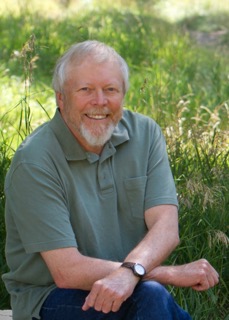
Michael Arloski, Ph.D., PCC, NBC-HWC is CEO and Founder of Real Balance Global Wellness, Inc. – a world leader in health and wellness coach training (https://realbalance.com/ ). Doctor Arloski is a pioneering architect of the field of health and wellness coaching. He and his company have trained thousands of coaches around the world.
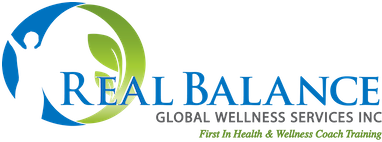

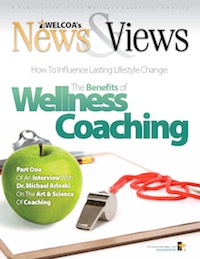
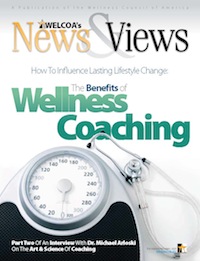


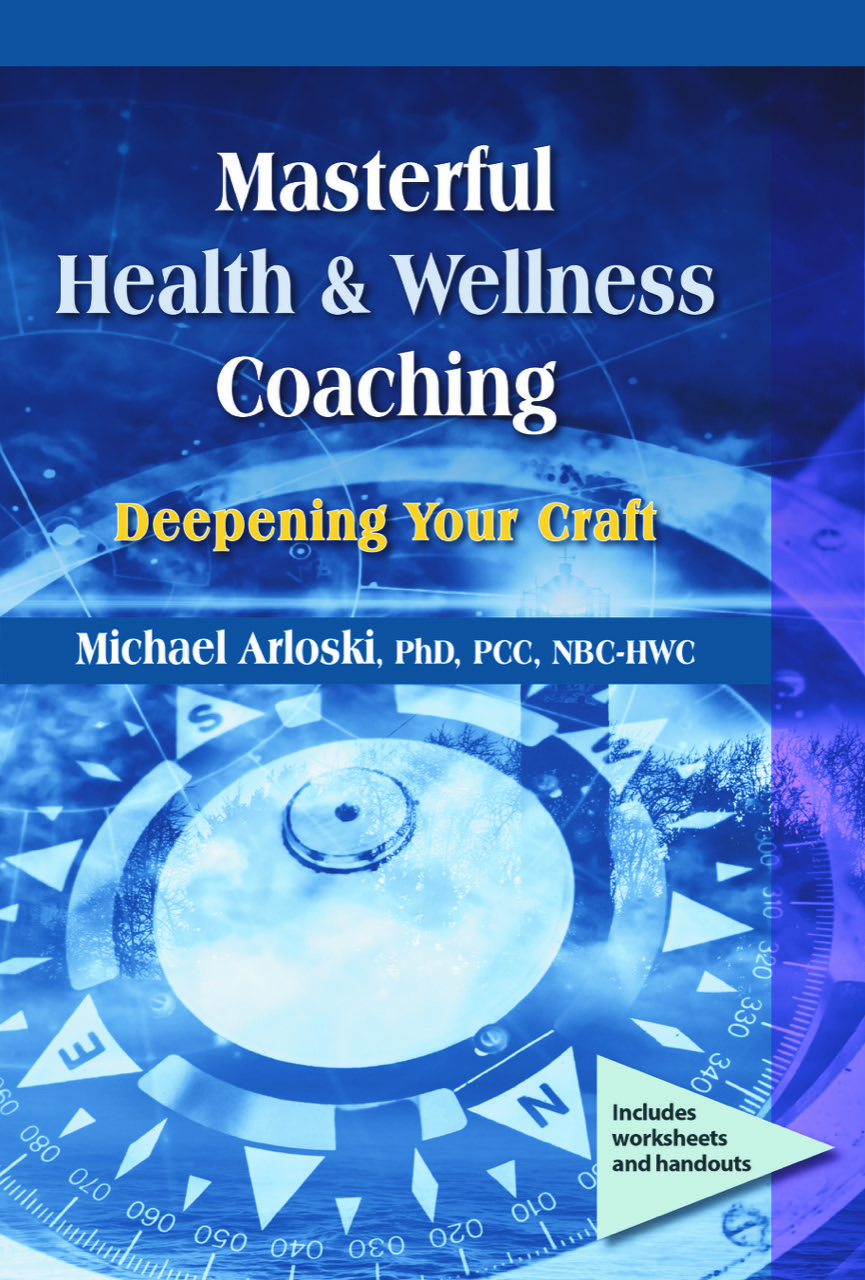

Only registered and logged in readers can leave comments.